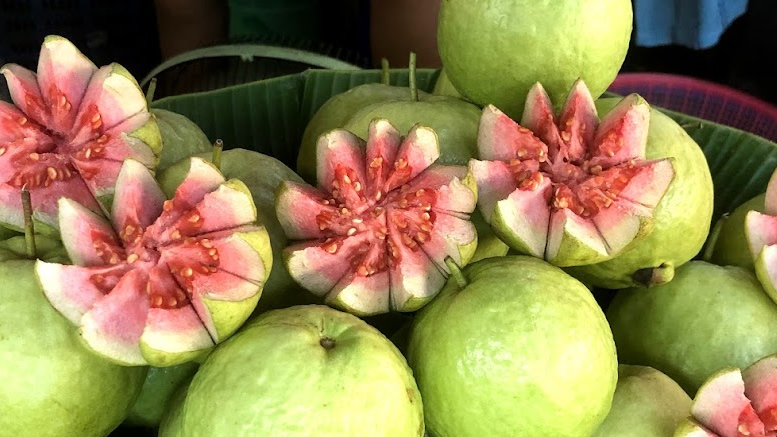Guava, known as “Goiaba” in Portuguese, is a tropical fruit from the guava tree (Psidium guajava) of the Myrtaceae family.
Originating in the warm Americas, this small, white-flowered shrub yields round to pear-shaped fruits prized for their delicate rind, creamy flesh, and distinctive aroma.
Cultivated in many tropical countries, guava offers a wealth of culinary possibilities. Its fresh fruit, typically 5 – 7 cm in diameter, boasts a creamy texture and numerous small seeds. Rich in vitamins A, B, and C, guava is enjoyed whole or sliced, often served with sugar and cream as a dessert. In Asia, raw guava is commonly paired with salt or prune powder for a unique flavor experience.
Boiled guava is a versatile ingredient in Asian cuisine, used to create an array of treats such as candies, preserves, jellies, jams, and marmalades (known as “goiabada”). Guava juice is also popular for its refreshing taste and nutritional benefits.
Despite its popularity, the guava tree is sensitive to frost and can become a pest in certain tropical regions. However, its culinary versatility and nutritional value make it a beloved fruit in Asian cuisine, cherished for its unique flavor and potential in various dishes.

